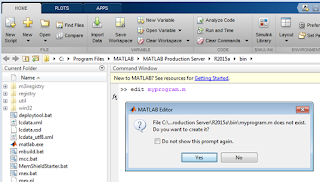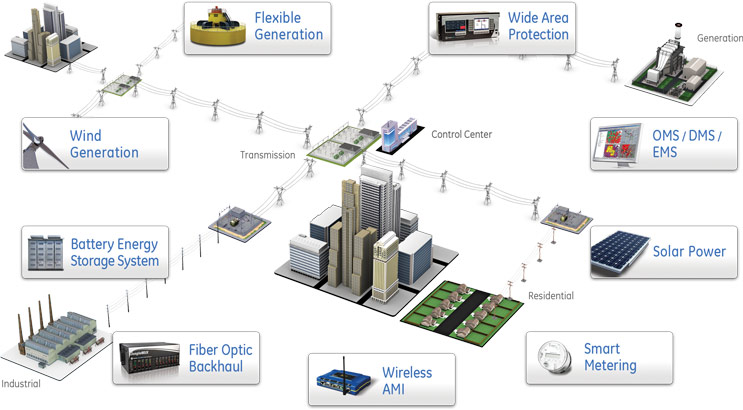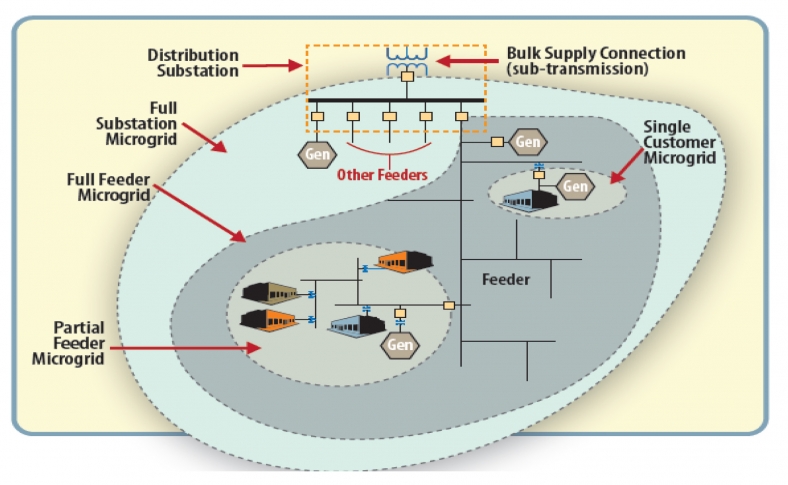Introduction
Smart Grid generally refers to a class of technology being used to bring utility electricity delivery systems into the 21st century, using computer-based remote control and automation. Much in the way that a “smart” phone these days means a phone with a computer in it, smart grid means “computerizing” the electric utility grid. They offer many benefits to utilities and consumers - mostly seen in big improvements in energy efficiency on the electricity grid and in the energy users’ homes and offices.
Smart power grids are expected to accommodate increasing volumes of renewable energy sources and energy storage systems. Smart grid infrastructure also facilitates the operation of subsystems in islanded modes in cases of contingency. The field opens wide doors for fruitful work of research and development along the axes of system components, operation, restoration, protection, control, planning, design, optimization, forecasting, and scheduling.
(Photo courtesy: www.purdue.edu/discoverypark)
Like the Internet, the Smart Grid will consist of controls, computers, automation, and new technologies and equipment working together, but in this case, these technologies will work with the electrical grid to respond digitally to our quickly changing electric demand.
In smart grids, communications between system components represent the backbone of system operation. A huge volume of data will be available at the discretion of the operator covering a number of aspects such as load consumption, generation scheduling, and component loading. Smart grids help improve system operation in terms of reliability, controllability, and optimization. Smart Grid network uses standard communication protocols to ensure compatibility and inter-operability.
The network connects substations, distribution grid devices, meters, and in-home devices with the utility’s head-end software to provide private communications for utility operations and secure communications to allow consumers to interact with their energy control devices.
Why Smart?
It give the consumer the information and tools required to make choices about their energy use. With a smarter grid, you can have a clear and timely picture of how much electricity you use. "Smart meters," and other mechanisms, will allow you to see how much electricity you use, when you use it, and its cost. Smart grid will add resiliency to our electric power System and make it better prepared to address emergencies. A key feature of the smart grid is automation technology that lets the utility adjust and control each individual device or millions of devices from a central location.
Intelligent – capable of sensing system overloads and
rerouting power to prevent or minimize a potential outage;
of working autonomously when conditions require resolution
faster than humans can respond and cooperatively in aligning
the goals of utilities, consumers and regulators.
Efficient – capable of meeting increased consumer demand without
adding infrastructure.
Accommodating – accepting energy from virtually any type of source including
solar and wind as easily and transparently as coal and natural gas; capable of
integrating any and all better technologies and energy storage technologies.
Motivating – enabling real-time communication between the consumer and utility so
consumers can tailor their energy consumption based on individual preferences, like price
and/or environmental concerns.
Quality-focused – capable of delivering the power quality necessary – free of sags, spikes, disturbances
and interruptions – to power our increasingly digital economy and the data centers, computers and
electronics necessary to make it run.
Resilient – increasingly resistant to attack and natural disasters as it becomes more decentralized and reinforced
with Smart Grid security protocols.
“Green” – slowing the advance of global climate change and offering a genuine path toward significant
environmental improvement with the improved usage of renewable energy sources.
Benefits
The benefits associated with the Smart Grid include:- More efficient transmission of electricity
- Quicker restoration of electricity after power disturbances
- Reduced operations and management costs for utilities, and ultimately lower power costs for consumers
- Reduced peak demand, which will also help lower electricity rates
- Increased integration of large-scale renewable energy systems
- Better integration of customer-owner power generation systems, including renewable energy systems
- Improved security
Micro Grid
(Photo courtesy: http://energy.gov/oe/services/technology-development/smart-grid)
Microgrids also support a flexible and efficient electric grid, by enabling the integration of growing deployments of renewable sources of energy such as solar and wind and distributed energy resources such as combined heat and power, energy storage, and demand response. In addition, the use of local sources of energy to serve local loads helps reduce energy losses in transmission and distribution, further increasing efficiency of the electric delivery system.
References
1. www.smartgrid.gov
3. http://energy.gov/oe/services/technology-development/smart-grid










































